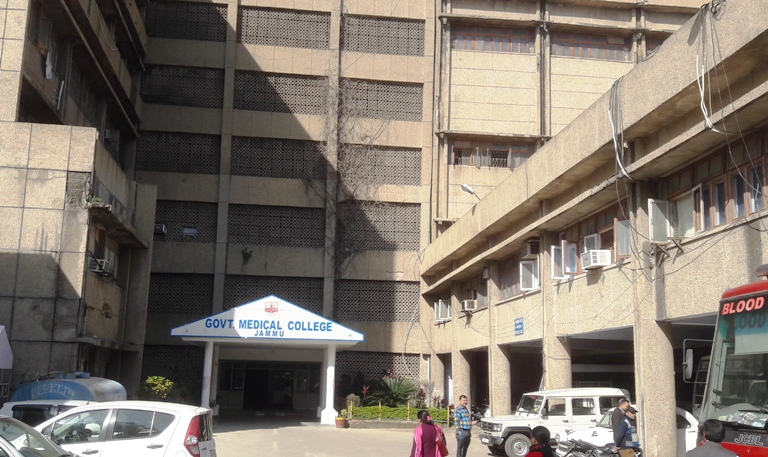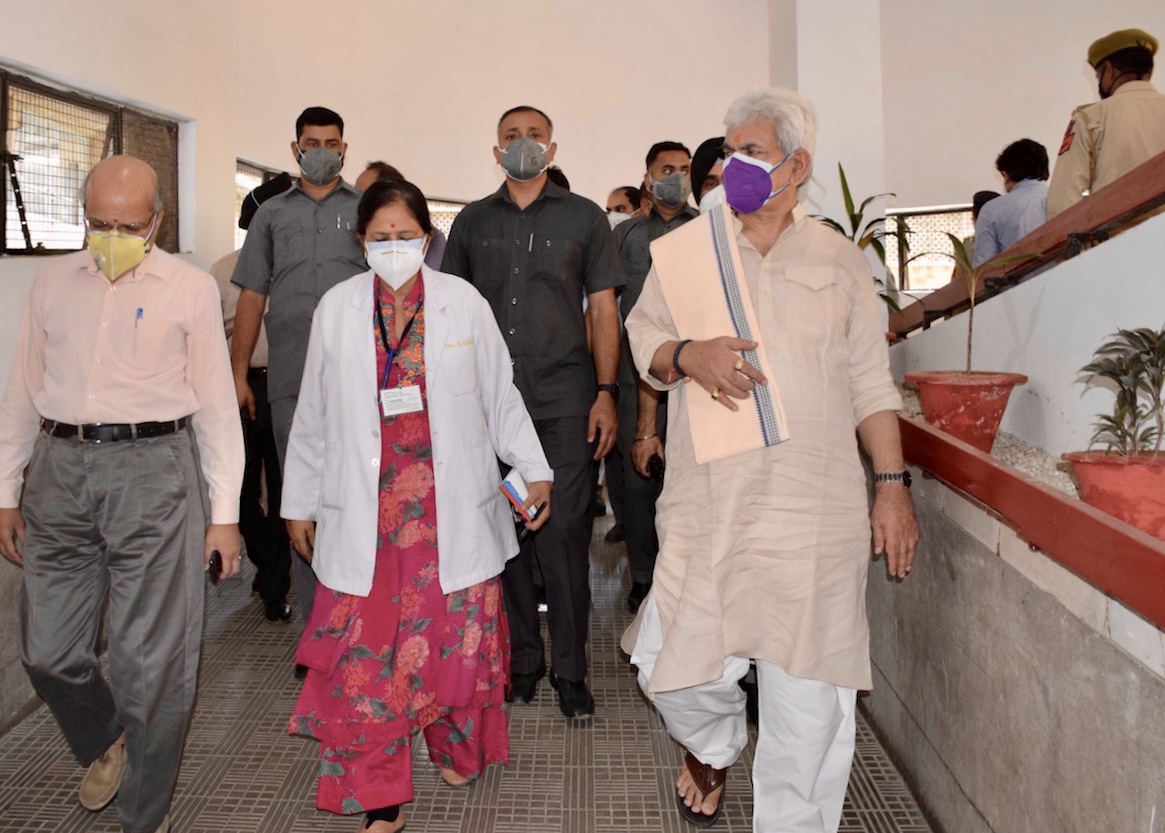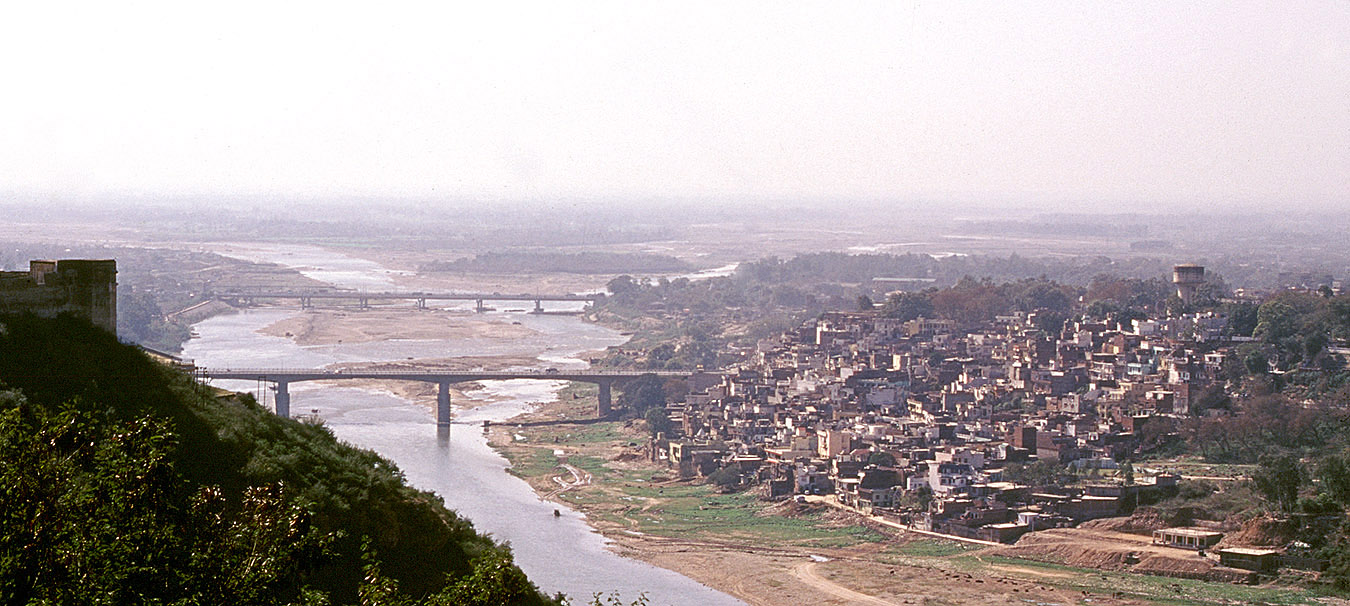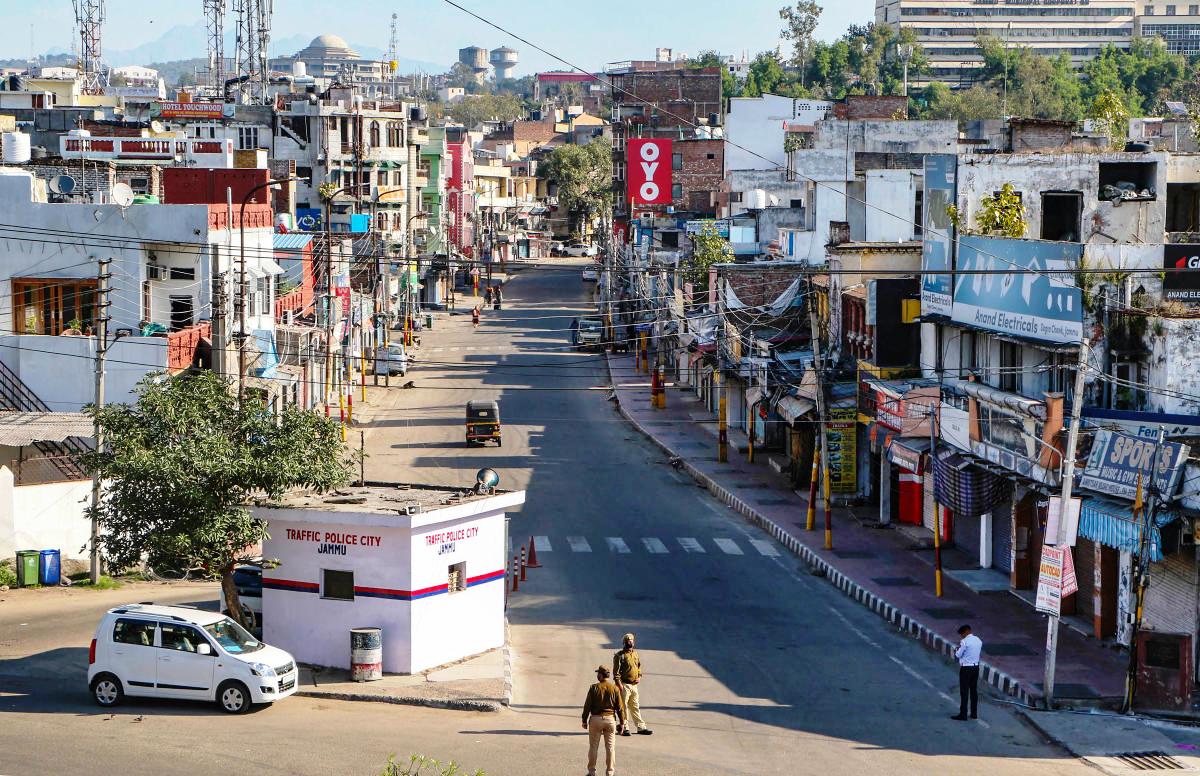With Kashmir having massive morbidity and Jammu leading in the mortality, a puzzled government is trying its best to locate the reasons responsible, reports Masood Hussain

The entry of the Covid19 causing virus into Kashmir was dramatic. It infected a female in Saudi Arabia and many others in her Umrah pilgrims group that took a long flight to Srinagar. She was detected positive on March 16, 2020. She survived. Ten days later, Kashmir reported the first death on March 26, of a religious preacher who had come home after attending a grand religious function. Three days later, a Tangmarg man became the pandemic’s second victim.
Not many people remember, however, that Jammu reported its first case on March 7, 2020, forcing authorities to put almost 400 people in Satwari and Sarwal under surveillance. It was almost a month later when GMC, Jammu announced the death of a 61-year old woman, a resident of Udhampur, who died of Covd19 on April 8.
The First Case
Srinagar got into a panic when the first case was reported. The first death actually saw people voluntarily restricted to their homes. However, Jammu’s Covid19 silence was broken by an emotional video in late March showing the dentist wife of a microbiologist crying over her husband’s hospital (read GMC) literally abandoning him and not offering any help in evacuating him, his father, a retired police officer, and his mother for Covid19 test. A section of the media took the Tablighi Jamat route to paint a villain’s image of the doctor ignoring the fact that he was formally part of the Covid19 diagnosis team between March 13 and March 19. As the video got viral, GMC Jammu extended all medical facilities to the Assistant Professor and also corrected the wrong impression that vested interests in the media and GMC had jointly created to suit the narrative in vogue.

Since then, the Covid19 started mass infections and sending body bags out for burial and cremation. But one distinction was clear – Srinagar was topping the 20-district chart, both in the number of infections and the deaths. May 6, 2021, was the last day when the deaths between the twin capital cities had a difference of one – Srinagar at 590 and Jammu at 589. May 7, was different as Jammu overtook Srinagar and the difference surged to 16 in 24 hours.
Even now, Kashmir holds most of the infections but the Jammu region is showing a massive increase in Covid19 related deaths.
A SKIMS Assessment
As the numbers started offering some idea to a frightening situation prevailing in Jammu, people started asking very comfortable questions.
It worried policymakers and the government. So in the very first response to the table talk, the government flew three top Kashmir doctors – Dr Rafi Jan, the head of the SKIMS Medicines department, Dr Mudassar Qadri, Associate Professor and Dr Mohammad Akbar from the Anaesthesia Department – to Jammu for discussions with their counter-parts to understand the factors responsible for high mortality in Jammu. On May 12, they had interactions with the GMC Jammu principal and all the relevant heads of the departments for an assessment to understand the trend.

Almost the same day, they had a video conference with a top officer in Raj Bhawan and shared some quick observations with him.
The doctors said the health infrastructure in Jammu is hugely centralised and must decongest at the earliest. Unlike Kashmir, they said patients lack options. They saw a serious issue in Jammu’s vertically consolidated health infrastructure.
They found a cultural issue contributing to the crisis – people take the zukaam quite easy till the situation worsens.
Huge Mortality
By May 12, the situation was different – Kashmir was having only 61.5 per cent of the overall infection across Jammu and Kashmir; more than 64 per cent of the active cases and around 55 per cent of the share in deaths. The rest was concentrated in Jammu.
But the trend started changing quite fast.

By May 22, 2021, Jammu and Kashmir has detected 267313 cases of which 163910 (61.31%) are in Kashmir leaving only 103403 (38.68%) in the 10 districts of Jammu.
Of the 49136 active cases, 28937 (58.89%) are in Kashmir and only 20199 (41.10%) in Jammu.
So far, Covid19 killed 3513 people and of them, 1844 (52.49%) were from Kashmir and only 1699 (48.36%) were from Jammu.
The question being used loudly these days is if Kashmir leads in the overall infections, why the mortality rate is so huge in Jammu? In Jammu, almost 1.64% of people who contract Covid19 die. In comparison, in Kashmir, only 1.12% of people with Covid19 infection have died so far.
The mortality rate hugely shifted within the two regions in the second wave. Till March 31, 2021, the mortality in Kashmir was 1.6%, and in Jammu 1.38%. By late May, it was completed changed. While the mortality rate in Kashmir came down to 1.11%, it shot up to 1.8%, much higher than the national average.
The people are asking questions. “Maximum health ministers in J &K have been from Jammu but still health infrastructure is pathetic at Jammu. Any reasons?,” Dr Anil Dhar asked. It triggered a debate. The fact is that since 2002 introduced the coalition culture in Jammu and Kashmir, all the health ministers of the erstwhile state were from Jammu – Shama Lal Sharma, Choudhary Lal Singh, Shabir Khan.
It is this question that is being asked publicly and, now, even Raj Bhawan is so keen to understand. Covid19 is creating more morbidity in Kashmir and huge mortality in Jammu.
Infrastructure Issues
Seemingly infrastructure does not seem to be an issue. Across Jammu, the information government reveals every 24 hours suggest, there are 2397 Covid19 beds including 2136 isolation beds and 261 Covid19 ICU beds. There is some vacancy on daily basis.
In Kashmir, however, most of the infrastructure is busy. The 10 districts of Kashmir have cumulative availability of 2723 Covid19 beds including 2590 isolation beds, and 133 Covid19 ICU beds.

What is interesting and hugely unwise is that almost 51.81% of the Covid19 infra is restricted to Jammu city. The rest of the nine districts in the Jammu region have slightly over 48% of the Covid19 infrastructure, right now. In comparison, Kashmir has only 39.88% of the Covid19 infrastructure in Srinagar city and the rest of it – more than 60% – is spread across nine other districts.
The other interesting facet of the Covid19 management was exposed by the Hindustan Times. It said that the government in anticipation had allocated Kashmir and Jammu provinces Rs 125 crore each (to respective Mechanical Engineering Departments) for procuring 37 pressure swing adsorption (PSA) oxygen units for each division by March 31. Unlike Kashmir, Jammu faltered.
By early May, Kashmir managed to get 20 plants (later IAF flew seven more from Germany).
As the panic touched peaks, the Jammu and Kashmir government diverted five plants from Kashmir to Jammu. Some of these plants were in the process of being installed that they were shifted out.

“Of the five units, which have been diverted, two were meant for Srinagar’s Shri Maharaja Hari Singh Hospital and Jawaharlal Nehru Memorial Hospital, while one was for Anantnag and two for Baramulla,” the newspaper reported. Reports suggest more diversions.
This led MED Kashmir to opt for internal adjustments. Plants meant for Shopian and Bandipora hospitals are now being installed at two major hospitals in Srinagar running with oxygen deficit. Now MED Kashmir is seeking machinery for Jammu from its supplier and hopes the Kashmir plants will be installed in 45 days.
It was because of this adjustment that authorities could claim that they have increased the availability of Oxygen in hospitals across Jammu and Kashmir from 15,000 LPM on April 1, to 50000 LPM on May 17, 2021. Interestingly, there has not been any action against MED Jammu failure.

Genome Issues
Offering an alternative perspective, of the crisis that Jammu is facing, the Apex Level Advisory Committee had pointed (as early as May 12) that majority of the Covid19 variants and Indian Double Mutant are prevalent more in Jammu than Kashmir.
Its report specifically mentions about 288 samples, collected by GMC Jammu and sent for genome sequencing. “Of the 288 samples, 70 samples had mutations that were classified as VOC (Variants of Concern) or VOI (Variants of Interest) and/or important mutations. Single mutations were seen in 26 samples, two mutations in 13 samples and multiple mutations in the remaining samples,” Jammu newspaper Daily Excelsior reported. “Mutation B.1.1.7 (UK variant), which has the potential for increased infectivity and spread in the community, was seen in 23 samples. This mutation is highly prevalent in adjoining State of Punjab as such was imported in large number to Jammu by the travellers”, sources said quoting the findings of the Committee, adding “ten samples had mutations similar to UK mutations with the same signature and have the potential to be more infectious as mutation B.1.1.7”.

It said B.1.617 (Indian Double Mutation) was seen in 7 samples and this is the first variant to have 2 mutations that enable the virus to evade antibodies and increase infectivity. “There were 17 samples with mutations without a linage number but have a signature to have increased infectivity,” the newspaper reported.
Quoting sources, the newspaper reported that genome sequencing of 123 SKIMS samples showed that there was only one sample that belonged to mutation N440K.
“Accordingly, the Apex Level Advisory Committee has pointed out that majority of the variants of the disease and Indian Double Mutant are more prevalent in Jammu region as compared to Kashmir region and has led to maximum Covid19 related deaths in this part of the Union Territory,” the newspaper reported.
The newspaper reported on May 15 that Genome sequencing of 158 samples from Jammu done by the Biotechnology lab at National Centre for Disease Control (NCDC) Delhi has revealed changes in the presence of variants in action. It showed the “presence of UK variant in more than 60% samples in March. However, in April, the percentage of UK variant dropped to 47 % and the B.1.617 increased to 38% that led to a sudden surge in Corona cases in Jammu Province”. It added: “Samples sequenced from Delhi showed the presence of UK variant in 30% samples and B.1.617 in only 15% in the month of March but in April, B.1.617 was found in 60-70% samples with B.1.617.2 found in more than 50% samples whereas the presence of UK variant decreased to less than 20 %.”
Central Experts
But the policymakers in Delhi and in Jammu were in a panic, or at least, they want to be seen in panic. Within a day after Ghulam Nabi Azad was appointed to head party’s Covid Task Force, he “expressed deep concern over the high number of casualties, especially in Jammu, and urged for immediate measures to save the loss of lives.”

Then came the tweet from Dr Jitendra Singh. “Central team of experts deputed to visit GMC and other health institutions in #Jammu in view of #COVID surge, Local authorities are advised to frankly point constraints faced by them without mincing words, so that Centre can optimally step in to assist them.”
They flew a central team of three experts comprising Dr Pranay Verma, Joint Director, Epidemiology, National Centre of Disease Control (NCDC), Delhi, Dr Mahesh Waghmare, Microbiology Department, NCDC Delhi and Dr Navneet Sharma, Professor, Department of Internal Medicine, Post Graduate Institute of Medical Education and Research (PGIMER), Chandigarh.
“There is a need to increase testing in such areas and the samples, as per the protocol, be sent to Delhi for genome study,” the doctors said in a press conference. Advising intensification of surveillance of the home isolated cases, early hospitalisation of serious cases, they interacted with media after spending some time in Samba and Jammu and talked to Covid19 management officials in 10 Jammu districts.
They said nothing new. The GMC Jammu had already cleared the situation. Their Kashmir counterparts had nothing more to say other than infra and cultural issues. “This was a political trip,” one senior GMC Jammu doctor said.
Rajouri Issues
Given the load that the hospitals have, the people in Pir Panchal Valley launched a moment to seek the opening of the Mughal Road. It was opened by Lt Governor Manoj Sinha for “fruit-laden trucks” and the movement of Gujjars and Bakerwals.
This infuriated the region and they sought restoration of the road to people especially for medical emergencies. They were saying that the hospitals in Jammu are overloaded and some of them may like to go to Kashmir for treatment. Finally, the government agreed but there has not been any patient movement so far. The twin districts of Rajouri and Poonch have lost 222 people and have the highest number of active cases after Jammu city. The first black fungus death also belonged to the region.

But the crisis has exposed the under-staffing of the key institutions in Jammu and Kashmir. In the last 10 days, the health administration in Jammu has decided to recruit people. While the GMC Jammu alone will be recruiting almost 450 professionals, the DRDO set up a 500-bed Covid19 special hospital is to be managed by 313 additional staffers.
Authorities aggressively worked on the vaccination front. Jammu city has 99.39 per cent of its 45-plus population vaccinated (first dose). Srinagar city has only 35.52 per cent. On a regional basis, almost 85.56 per cent of the 45-plus population in 10 Jammu division districts have already taken the first dose. It is only 61.15 per cent in the case of 10 Kashmir districts.
But the crisis remains.















